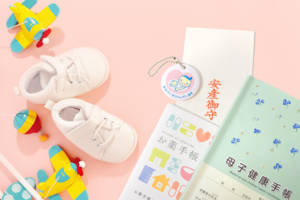How to create a Japanese Resume/Rirekisho(履歴書)
Wednesday, October 9, 2024
A step by step guide for creating a Japanese resume

What is Rirekisho?
A Rirekisho is a vital component of the Japanese job application process, serving as a traditional resume. This document presents essential personal details, educational history, work experience, and skills in a standardized format. Its structured nature emphasizes clarity and professionalism, making it a critical tool for candidates to effectively showcase their qualifications to potential employers in Japan.
How to Write a Japanese Resume – Basic Personal Information

1. Resume Submission Date
Enter the date (year/month/day) you will submit your resume.
* The date the resume was created is also OK, but if the resume was created 3 months ago, please modify it to a recent date.
2. Full Name
Please enter your name in Hiragana next to "furigana" at the top, and in English or Katakana at the bottom. If you're from China or Korea, write your name in Kanji.
3. Nationality
Please enter your country of origin (nationality).
4. Date of birth (Age)
The date of birth is written in the following format “(Year) 年/ (Month) 月/(Day)日生.”
5. Current Address
If you live in Japan, please write your address in Japanese. For Japanese addresses, enter the address reading (furigana) in hiragana at the top and the address at the bottom in Kanji or Katakana.
*Furigana is not needed for numbers.
6. Contact
This section exists because sometimes Japanese people have an official registered address but live elsewhere. For example, a student's official address is still their childhood home, but are living in the school dorms. If you don't have a separate "home base" in Japan, simply put “同上,” which means "same as above," (this is most common). If you want to provide a different way for the company to reach you, input it here.
7. Photo
Unfortunately, adding photos to resumes is still standard practice in Japan. Your resume will likely get rejected without a photo.
Attach a recent front-facing, chest-up photo taken within the last 3 months. Avoid wearing hats, and choose a clear image of your face. In Japan, it's common to wear a tie in CV photos to make a good impression.
8. Gender
Please circle either male (男) or female (女).
9. Telephone Number
Enter a phone number that can be reached (ex. mobile phone number). If you live overseas, be sure to include the country code as well.
10. E-mail
Please enter an email address where you can be contacted.
2. How to Write a Japanese Resume – Academic/Work History

1. Academic Background
Start by writing "学歴" (education) in the center of the first line. Start listing your academic background from the next line in reverse chronological order: start from the oldest to the most recent educational achievement. Other points to note:
- Each entry should include the year and month of when you started and graduated (or are expected to graduate) on separate lines.
- Always include at least two educational institutions. If you have a Bachelor's degree, list your high school and university. If you have a Master's degree, list your Bachelor's and Master's degrees.
- Always include all higher education. If you have two Master's list both and your Bachelor's.
- Include language school if it is relevant to the job you are applying for or it represents a significant period of your life.
- If you've switched schools or left one without completing a degree, it’s important to list the years attended and note that you "left" or "withdrew" (中退 - chūtai).
- If you’re currently enrolled in a program, indicate your expected graduation date: 現在: 〇〇大学 経済学部 経済学科 在学中(2026年3月卒業見込み)
2. Work History
Leave a blank line below your educational background, and write "職歴" (Work History) in the center. List the following in order:
Year and month you joined the company
Company name (official name)
Department and job title
Year and month you left, with the reason as "一身上の都合により退職" (left for personal reasons)
If still employed, write "現在に至る" (Currently employed).
End the section with "以上" (Over).
3. How to Write a Japanese Resume – Licenses and Qualifications

1. Licenses and Qualifications
Write the official name of the license or qualification, along with the acquisition year. If you have qualifications relevant to the job you're applying for, make sure to include them (e.g. Japanese language proficiency test, technical certifications, licenses, etc.). People generally include if they have a Japanese driver's license in this section as well. If not, simply write “特になし” (None in particular) on the first line.
2. Special Skills, Self-PR, etc.
Don't leave the "Special skills, self-promotion, etc." section blank as it can spark important conversations during interviews. Highlight your key skills briefly and specifically in your Japanese CV, keeping your resume concise.
3. Commuting Time
Enter the actual commute time from home to the address of the company you are applying to. If you calculate on Google Maps that it takes 30 minutes, enter “about 30 minutes (約30分)”. If you are currently living overseas, living in a different city, or are unsure, you do not need to fill out this section.
4. Dependents (excluding spouse), Spouse, and Spousesal support
Enter the number of dependents (excluding spouse e.g. children, elderly parents) to help calculate taxes and social insurance. If you are supporting your spouse with your income, select "Yes" for Spouse Obligation. If your spouse works and has social insurance, select "No." If they don’t have insurance and you need to apply, choose "Yes."
5. Space for Personal Requests
For the desired conditions section, it is common to write “I will comply with your company regulations (貴社規定に従います).” However, if you have any specific conditions that are essential (e.g., work location or salary), be sure to mention them. You can discuss further details during the interview.
Other General Rules
- Consistency: Use the same format and structure throughout your resume for consistency. (e.g. date format, font, text size, writing style, etc.)
- Accuracy: Make sure all dates are correct, especially for the graduation date, as this is often checked.
- No Over-Personalization: Unlike some Western resumes, personal flair or additional details (such as GPAs or course descriptions) are usually not included.
- Avoid overloading: While it's important to show all relevant education, avoid listing every single course or short-term program (e.g., seminars, certification programs) unless they are directly relevant to the job you are applying for.








